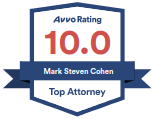Expert Boulder & Denver Easement Lawyer
Introducing Mark Cohen who specializes in easement disputes in Adams County, Arapahoe County,
Boulder County, Clear Creek County, Gilpin County, Jefferson
County, Denver County, Summit County, and Grand County. Because of his expertise in agricultural law he has also represented clients in easement disputes involving
properties on Colorado’s eastern plains.
Why hire Mark Cohen for Easement law?
Mark’s expertise is well-known. In 2019, he gave a presentation to
the Colorado Bar Association on Mountain Real Estate Issues. In
2021, he presented a continuing legal education webinar on easement
law for Half Moon Education. In 2022, he presented Easement Law for
Surveyors at the
12th Annual Rocky Mountain Surveyors Summit.
Those who own property in a platted subdivision can often access
their parcel from a public road. But for those who cannot, an
easement may be the only way to obtain legal access to their
property. Legal access is important because trespass is a crime and
because a county or municipality will not issue a building permit if
the owner does not have “legal access.”
Colorado defines an easement as “an interest in property which,
though distinct from an ownership interest in the land itself,
nevertheless confers on the holder an enforceable right to use the
property of another for a specific purpose.”
Wright v. Horse Creek Ranches, 697 P.2d 384, 387-388 (Colo. 1985).
See Mark's expert accomplishments & profile.
(opens in a new tab)
The Servient Estate and the Dominant Estate
The property burdened by the easement is customarily known as the
“servient estate,” while the property benefited by the easement is
called the “dominant estate.” Bijou Irrig. Dist. v. Empire Club,
804 P.2d 175, 183 (Colo. 1991).
The owner of the servient estate enjoys all the rights and
benefits of proprietorship consistent with the burden of the
easement; while the rights of the owner of the dominant estate are
limited to those connected with use of the easement. Id. An
easement in gross does not have a dominant estate, only a servient
estate. Sinclair Transportation Co. v. Sandberg, 350 P.3d 924
(Colo. App. 2014).
Understanding Easement Disputes
Express or Implied
An easement may be express or
implied. An express easement is created by
grant or reservation in a deed or other document. Colorado also
recognizes various implied easements, which I discuss more fully
below.
Appurtenant or In Gross
An easement may be appurtenant or in gross. An easement
appurtenant runs with the land and belongs to
the owner by virtue of his or her ownership of the land the
easement benefits. An easement in gross does not belong to an
individual by virtue of her ownership of land, but rather is a
personal right to use another's property. In Colorado, easements
are presumed to be appurtenant. Lewitz v Porath Family Trust, 36
P.3d at 120 (Colo. App. 2001).
Exclusive or Non-Exclusive
An easement may be exclusive or non-exclusive. Unless the grant
conveying an easement specifically characterizes the easement as
“exclusive,” the grantor of the easement retains the right to
use the property in common with the grantee. Barnard v. Gaumer,
146 Colo. 409, 361 P.2d 778 (1961); Bergen Ditch & Reservoir Co.
v. Barnes, 683 P.2d 365 (Colo.App.1984).
Purposes of Easements
-
Allow existing encroachments, e.g., structures, fences,
retaining walls, trees, etc.
- Utility easements
- Easements for construction (usually for a fixed term)
- Drainage easements
- Easements for common areas (contained in covenants)
- Negative easements (to preserve a view, for example)
If the document creating the easement does not specify a
purpose, it may allow for unlimited reasonable use.
Maasen v. Shaw, 133 SW.3d 514 (Mo. App. 2004).
Implied Easements
Some of the most common forms of implied easements are easements by necessity, easements implied by pre-existing use, prescriptive easements, easements by estoppel, and easements under R.S. 2477.
Easement by Necessity.
One type of implied easement is an easement by necessity. An implied way of necessity arises when the owner of a parcel of land conveys and grants part thereof to another, which leaves the remainder of the land without ingress or egress, except over the part conveyed. There are three requirements.
The first requires that the original ownership of the entire tract be held by a single grantor prior to a division thereof. The second requires that the necessity existed at the time of the severance. The third requirement is that the necessity for the particular right-of-way be great. Wagner v. Fairlamb, 379 P.2d 165 (Colo. 1963).
Easement Implied by Pre-Existing Use
Another type of implied easement is an easement implied by pre-existing use. Four requirements must be met to establish an implied easement by pre-existing use:
- unity and subsequent separation of title
- obvious benefit to the dominant tenement and a burden to the servient tenement which existed at the time of the conveyance
- evidence that the common owner used the premises in an altered condition long enough before the conveyance to show that the change was intended to be permanent
- necessity for the easement. Lee v. School District, 435 P.2d 232 (Colo. 1967).





